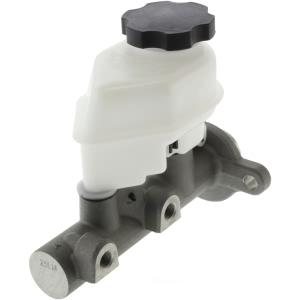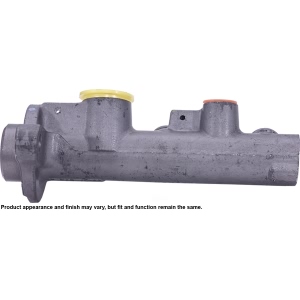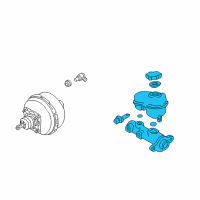< Back ×
2000 Chevrolet Monte Carlo Brake Master Cylinder
My Vehicle Change Vehicle
2000 Chevrolet Monte Carlo
< Back to View All
Brake Boosters & Brake Master Cylinders
- Department
- Series
- Brands
- Prices

 $88.85Product Specifications
$88.85Product Specifications- UPC: 805890008392
- Part Description: 2000 Chevrolet Monte Carlo Premium Brake Master Cylinder
Vehicle Fitment- 2000 Chevrolet Monte Carlo | All Trims | All Engines

 Product Specifications
Product Specifications- Notes: Supplied w/o Reservoir
- Bore Diameter (N): 1.00"
- E-Waste: No
- Installation Hardware Included: No
- Master Cylinder Color/Finish: Gray
- Master Cylinder Material: Aluminum
- Mounting Hole Quantity: 2
- Package Contents: Master Cylinder, Reservoir Pin Kit
- Port Quantity: 2
- Primary Port Size: M12 x 1.0
- Product Condition: Remanufactured
- Reservoir Included: No
- Secondary Port Size: M12 x 1.0
- UPC: 082617378109
- Part Description: 2000 Chevrolet Monte Carlo Remanufactured Master Cylinder
Vehicle Fitment- 2000 Chevrolet Monte Carlo | All Trims | All Engines
- Product Specifications
- Notes: Impala, Monte Carlo; W/O ABS
- Other Names: Master Cylinder
- Item Dimensions: 11.9 x 8.0 x 6.6 inches
- Item Weight: 4.10 Pounds
- Fitment Type: Direct Replacement
- Part Description: 2000 Chevrolet Monte Carlo Cylinder Asm, Brake Master
Vehicle Fitment- 2000 Chevrolet Monte Carlo | LS, SS, SS 35th Anniversary Edition, SS Dale Earnhardt Signature Edition | 6 Cyl 3.4 L GAS, 6 Cyl 3.8 L GAS
- Product Specifications
- Other Names: Master Cylinder
- Item Dimensions: 9.4 x 7.5 x 9.4 inches
- Item Weight: 2.60 Pounds
- Fitment Type: Direct Replacement
- Replaces: 18026277, 18060780
- Part Description: 2000 Chevrolet Monte Carlo Cylinder Asm, Brake Master
Vehicle Fitment- 2000 Chevrolet Monte Carlo | LS, LS Competition, LS Sport, LT, SS, SS 35th Anniversary Edition, SS Dale Earnhardt Signature Edition, SS High Sport, SS Pace Car | 6 Cyl 3.4 L GAS, 6 Cyl 3.8 L GAS
FAQ for Brake Master Cylinder Repair
Q: How do you fill the master cylinder reservoir?
A:
You should clean the reservoir cap before removal, remove the twist cap and the diaphragm and avoid filling the reservoir past the maximum fill level. Then you should install the cap and the diaphragm when the reservoir is full.
By Bob
GM Specialist
01/11/2022Q: What is the removal procedure for the master cylinder?
A:
The procedure is to remove the master cylinder, wipe the reservoir cap clean, remove the reservoir cap and the diaphragm, replace the reservoir cap and the diaphragm, remove the master cylinder reservoir and the retainer, apply low pressure, non-lubricated, compressed air into the upper outlet port, remove the seals and the spring retainer, inspect the master cylinder for scoring or corrosion, clean all of the components and dry the components.
By Bob
GM Specialist
01/11/2022Q: How do you install the master cylinder?
A:
You can install lubricated seals and the spring retainer, install the spring and the secondary piston, install the lubricated primary piston, install the retainer, install the master cylinder reservoir, insert the diaphragm into the reservoir cap, install the cap and install the master cylinder.
By Bob
GM Specialist
01/11/2022Q: How do you install the master cylinder reservoir?
A:
You can lubricate the new O-rings and the reservoir-to-housing fittings, insert the O-rings into the grooves in the reservoir, connect the reservoir to the master cylinder body, install the spring pins and install the master cylinder.
By Bob
GM Specialist
01/11/2022Q: How do you replace the master cylinder?
A:
You can remove the brake pipes, disconnect the fluid level sensor electrical connector, remove the master cylinder mounting nuts and the master cylinder, drain the master cylinder reservoir of all brake fluid and remove the master cylinder reservoir.
By Bob
GM Specialist
01/11/2022Q: What is the removal procedure for the master cylinder reservoir?
A:
The procedure is to remove the master cylinder, clamp the flange on the master cylinder body in a vise, drive out the spring pins with a suitable 1/8 inch punch, remove the reservoir body and the O-rings, inspect the reservoir for cracks or deformation, clean the reservoir with clean denatured alcohol and dry the reservoir with non-lubricated compressed air.
By Bob
GM Specialist
01/11/2022Q: What is the proper way to install the master cylinder?
A:
You can install the master cylinder reservoir, the master cylinder, and the master cylinder mounting nuts, connect the fluid level sensor electrical connector, connect the brake pipes to the master cylinder, fill the master cylinder reservoir with brake fluid and bleed the brake system.
By Bob
GM Specialist
01/11/2022See more FAQs (2)

